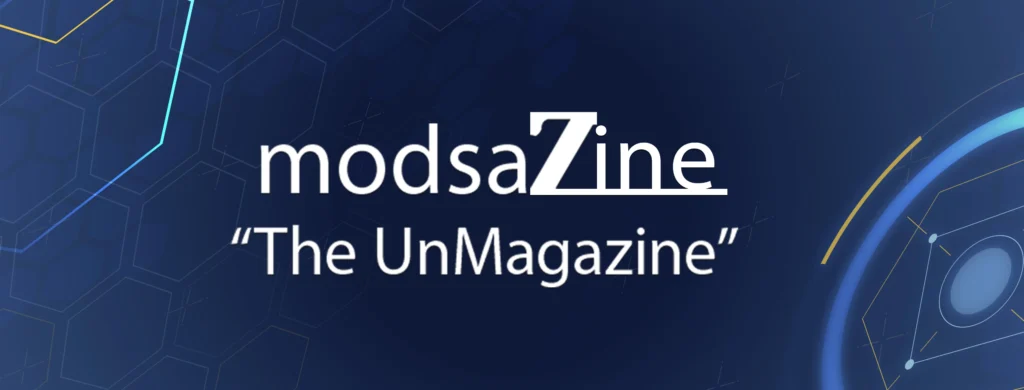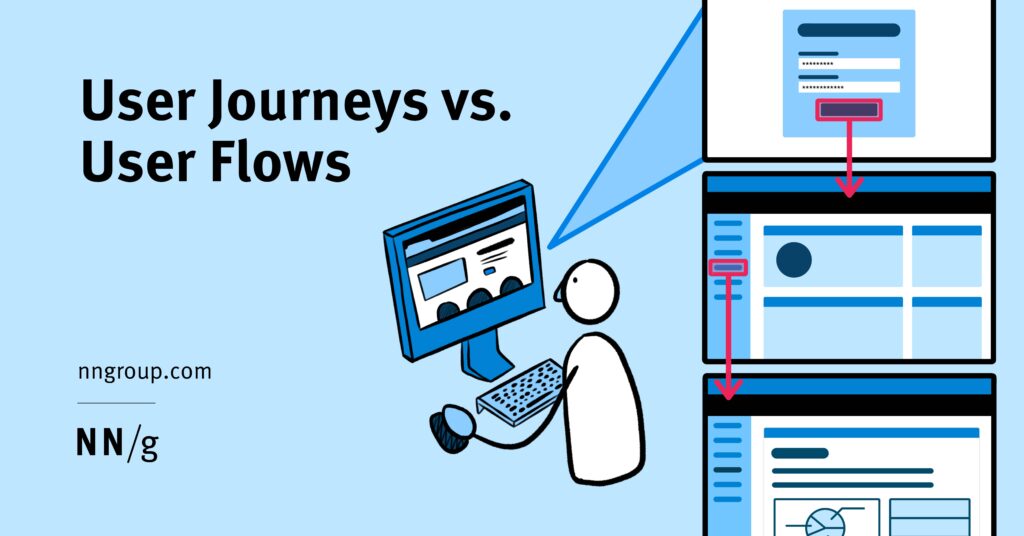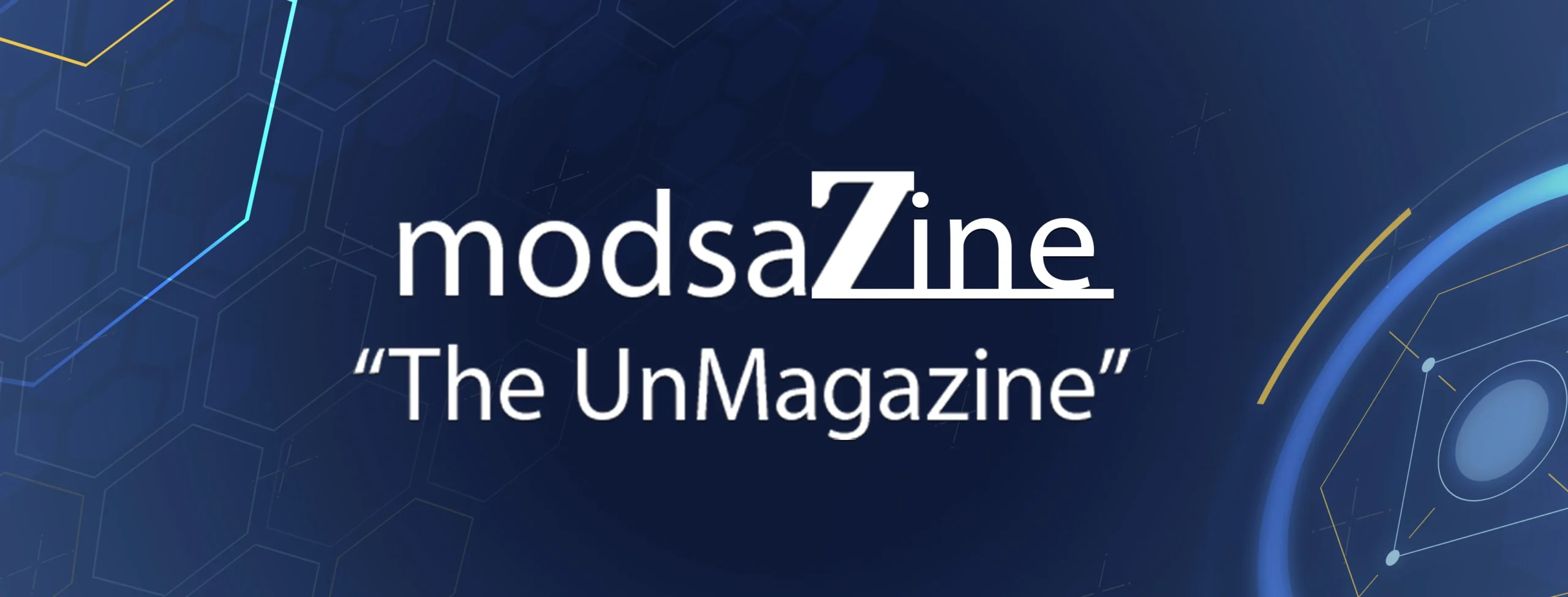User journeys and user flows are both UX tools that capture how people accomplish goals with certain products or services. They share some similar traits. Both user journeys and user flows are:
- Used during design ideation or evaluation activities for the purpose of understanding and optimizing experience.
- Structured around a user goal and examined from the perspective of the user or customer (not a company or product).
- Captured and communicated via UX-mapping methods.
Their main distinction, however, is the level of detail and focus for each: User journeys describe a user’s holistic, high-level experience across channels and over time. User flows zoom in to describe a set of specific, discrete interactions that make up a common user pathway through a product.
What is a User Journey?
Definition: A user journey (or customer journey) is a scenario-based sequence of the steps that a user takes in order to accomplish a high-level goal with a company or product, usually across channels and over time.
The underlying goal of a user journey is high-level. Describing the journey will involve understanding the experience of a user across many points of interaction, because, in a journey, users might use with multiple channels or sources of information.
Consider a new-patient journey as an example. For any person finding and evaluating a new doctor, there will be many touchpoints over a long time (days, weeks, or months): researching information on the practice’s website, calling to schedule an appointment, receiving email communications, visiting the physical office, accessing information in a patient portal, and following up via phone if necessary.

Because of the complexity of the journey, contextualizing these actions with information about users’ emotions and thoughts can be useful for analyzing and optimizing the experience.
Journey maps are a common artifact for visualizing journeys, as they are narrative and descriptive. Effective journey maps don’t just relay the steps taken to achieve a goal; they tell a user-centered story about the process.

The best research methods for journey mapping are usually context methods, such as field studies and diary studies, which uncover longer-term user goals and behaviors in the moment. These methods can be combined with user interviews to uncover first-hand frustrations and needs.
What Is a User Flow?
Definition: A user flow is a set of interactions that describe the typical or ideal set of steps needed to accomplish a common task performed with a product.
Compared to a user journey, the underlying goal of a user flow is much more granular, and the focus is narrowed to a specific objective within one product.
Some appropriate goals to capture in user flows might be: purchasing a tennis racket on a sporting goods site, signing up for email updates on a credit-score-monitoring application, or updating a profile picture on a company’s intranet. These goals can be accomplished in the short-term (minutes or hours, at the most), and with a relatively limited set of interactions.
User flows can be represented with artifacts such as low-fidelity wireflows, simple flow charts, or task diagrams. These maps capture key user steps and system responses; they do not contextualize the process with emotions and thoughts like a journey map does.

The best research method for obtaining the data to map user flows is usability testing, which allows us to watch users interacting directly with the product in directed scenarios. As with user journeys, tools that capture analytics (e.g., click heatmaps) are a useful secondary source of insights.
Combining User Journeys and User Flows
It’s often useful to capture both user journeys and user flows and combine them to understand both macro- and micro-level views of experience. User flows can be thought of as a deep dive into specific areas of the high-level user journey.
For example, let’s go back to the high-level activities that make up the new-patient journey described earlier. Some of those activities entail using digital products (e.g., researching information on the practice website, accessing results in the patient portal). By documenting the associated user flows for these goals, we could further understand the micro-level experience in context of the greater journey.

Unfortunately, most teams do not have systematic processes in place to connect these views, due to gaps in internal team structures, lack of holistic measurement programs, or plain lack of capacity and competency to do the work.
Comparison: User Journeys vs. User Flows
The main differences between user journeys and user flows are captured in the table below:
| User Journey | User Flow | |
| Definition | A scenario-based sequence of the steps that a user takes in order to accomplish a high-level goal with a company or product, usually across channels and over time | A set of interactions that describe the typical or ideal set of steps needed to accomplish a common task performed with a product |
| Focus | Macro: Broad and high-level (e.g., the experience of becoming a new patient of a medical practice) | Micro: Specific and granular (e.g., signing up for alerts on a website) |
| Scope | Zooms out to consider multiple touchpoints and channels | Zooms in to understand interactions within a single product |
| What it captures | The user’s actions, emotions, and thoughts, as well as channels | Product-based interactions (key user actions and system responses) |
| Appropriate artifacts | Journey maps | Wireflows, flow charts, or task diagrams |
To determine whether a user journey or a user flow is best for your specific context, consider the following questions:
- Does your user process involve more than one channel or more than one, known product (e.g., your company’s website)? User journeys are best for capturing activities dispersed over multiple channels; user flows are well-suited for interactions within one product.
- Can users generally accomplish the goal in minutes or hours, at the most, or will they need to complete activities over days, weeks, or months? User journeys are better for communicating activities over longer periods of time; user flows are better for relatively short-term goals.
- Will it be critical to understand not only the actions but the emotions and thoughts of users across more complex decision-making? User journeys capture those; user flows are limited to sequences of steps, with no additional information about users’ emotional states.


